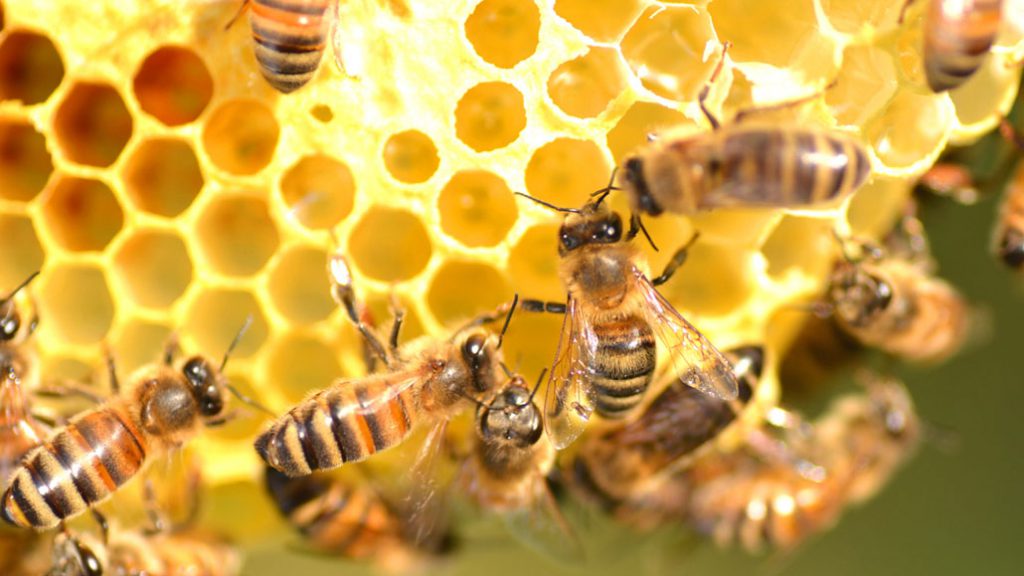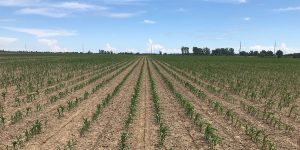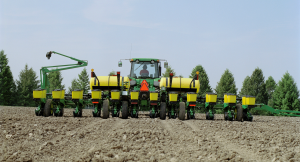Science is key
KEEPING IT REAL IN PESTICIDE REGULATIONS

DEB CONLON IS a strong advocate for the federal government’s reliance on science, not emotion, to review pesticides, and points to the recent decision on neonicotinoids (neonics) as proof.
“When the issue arose, Health Canada was on it right away,” says the manager of government relations for Grain Farmers of Ontario. “We have a world-class regulatory agency that is respected globally, and we need to support it.”
Since 2012, the government has been re-evaluating this class of pesticides as a result of growing concern over a rise in bee deaths. Grain farmers across the country were worried that an important tool to help them protect their crops might be taken away from them, and lobbying efforts — from everyone in the industry, including the 28,000 farmer-members of Grain Farmers of Ontario — went into high gear.
There was a lot of interest and controversy generated in the issue both nationally and internationally. While many organizations pointed to neonics as the main cause of bee die-offs in the early days, the Canadian government instead monitored the actual effects of the pesticide and found that there were several other factors at play, including habitat and food source losses, diseases, viruses, and pests.
Besides conducting research, it worked with provincial environmental agencies and agricultural groups to develop ways to protect pollinators, including bees. In 2014, farmers were asked to adopt mitigating measures such as using best management practices, carefully following spray label instructions, working with beekeepers, and using the right seed flow lubricants.
“Farmers were willing to participate in the assessments, and that made a big difference,” Conlon says, adding that the government had to withstand intense pressure by environmental activists through the thousands of letters and media stories during that time.
Health Canada said that, with these measures in place, bee incidents were lower by 70 to 80 per cent through 2014, 2015, and 2016.
In April 2019, the government completed its re-evaluations, and found that, while some uses needed to be cancelled and some restricted, treatments on seeds and greenhouse vegetables did not pose an unacceptable risk.
There are still ongoing assessments to determine what effect all neonics have on aquatic insects, and that research hasn’t yet concluded.
REGULATORY PROCESS
All pesticides in Canada have to go through a rigorous, science-based review.
Health Canada’s Pest Management Regulatory Agency (PMRA) checks first for the effects on humans — those who will be handling the pesticides, people who eat the food it’s used on, and bystanders who might be around when they’re being used.
Then, an environmental assessment is conducted, checking effects on such things as the water, soil, fish and birds, and, since the neonic issue, a pollinator assessment is done. A value assessment is also completed — usually by the company producing the product — to ensure the pesticide actually works.
Finally, there is a 45-day public consultation for new active ingredients and a 90-day period for re-evaluations.
It’s a huge job.
In a 2017 interview with the Ontario Grain Farmer, the agency’s director general of policy, communications and regulatory affairs, Jason Flint said, “We receive between 2,500 and 3,000 applications a year — both for new active ingredients and new or amended product approvals. Some new active ingredients will have two or three products associated with them, and others can have as many as 10.”
The standards that manufacturers need to meet in these applications are set by the Organization for Economic Co-operation and Development, and international collaboration means there is consistency across countries in how pesticides are reviewed. It also helps with maintaining export markets — on which all grain farmers heavily rely.
For Conlon, the system worked. Bees were saved and producers could get on with protecting the crops they grow for the benefit of all.
“Science has to prevail,” she says. “We can’t regulate safety through public opinion.” •






















